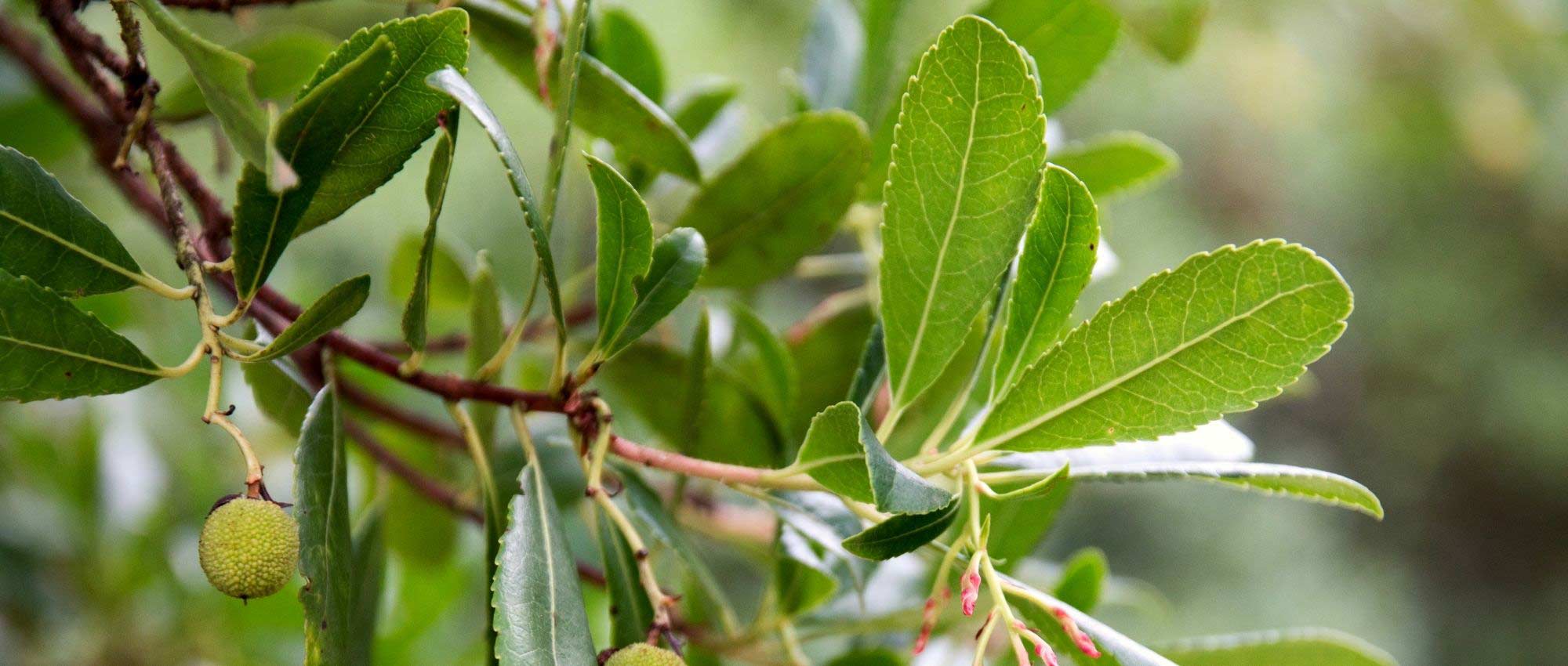
10 evergreen shrubs for coastal gardens
Discover our selection!
Contents
Seaside gardens offer a splendid setting and a particularly mild climate for growing plants, but these particular conditions also present constraints for plants: strong winds, salt spray, poor, well-draining soils… Suitable plants must therefore be found that will tolerate these conditions. This is true of certain evergreen bushes, such as strawberry tree, Pittosporum or rockrose. They are perfect for creating a windbreak hedge, effective in every season! By sheltering the garden from wind and spray, this will also make it easier to grow slightly more delicate plants! Discover our selection of evergreen bushes for planting by the sea, along with our tips to grow them successfully.
→ Also discover our advice sheet : 6 climbing plants for the seaside
Strawberry tree, Arbutus unedo: king of Mediterranean gardens
Strawberry tree is a superb bush native to the Mediterranean basin. It bears dark green, dentate leaves, and offers flowering in autumn, usually September–October, in the form of creamy-white bell-shaped flowers! These small flowers are followed by red, rounded, highly decorative fruits that resemble strawberries and are edible! Its trunk is magnificent: it becomes gnarled with age, and is covered with a beautiful reddish bark that peels naturally (the bark detaches gradually in the form of scales, renewing itself). Thus strawberry tree is decorative all year round. It is a bush that grows slowly but, in return, has great longevity! In addition, it proves resistant to disease and drought. Highly tolerant of sea spray, you can plant it either as a specimen or in an informal hedge, alongside other bushes.
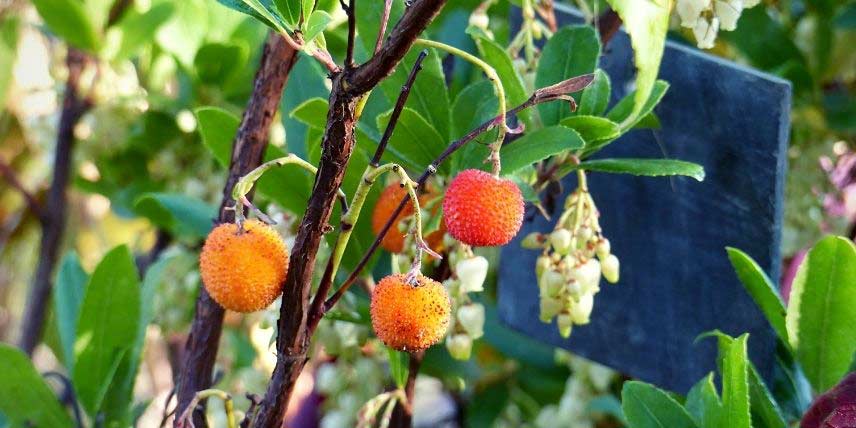
Fruits and flowers of strawberry tree, Arbutus unedo
Read also
10 perfect bushes for a seaside gardenGriselinia littoralis : the perfect coastal bush
Native to New Zealand, Griselinia is valued for its beautiful light-green, bright and glossy foliage. Leaves are ovate and thick. Moreover, its foliage is dense and bushy, which makes it an effective privacy screen and good protection against sea spray. Ideal for planting as a hedge! Its flowering, which appears in May–June, is melliferous and appreciated by pollinating insects, but is very inconspicuous, not particularly decorative. It thrives in full sun or partial shade, and prefers deep soils with low lime content. It reaches up to 3 metres in height at ripeness, and also has the advantage of growing quickly!
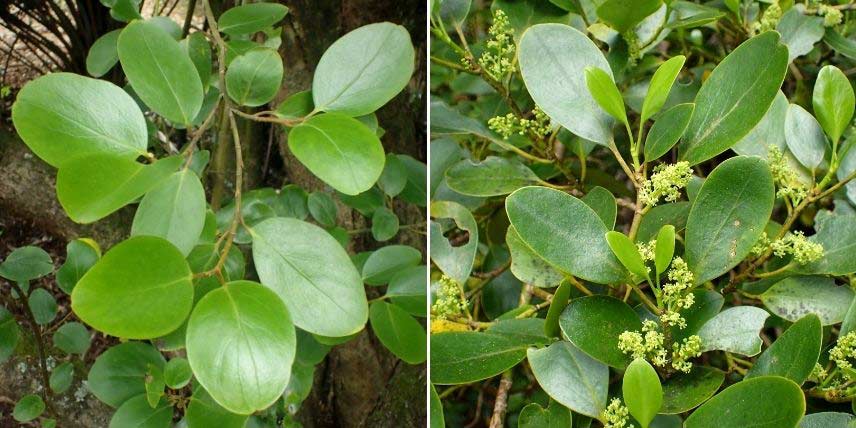
Foliage and flowering of Griselinia littoralis (photos Krzysztof Ziarnek, Kenraiz)
Discover other Evergreen shrubs
View all →Available in 0 sizes
Available in 1 sizes
Available in 1 sizes
Available in 1 sizes
Available in 1 sizes
Available in 1 sizes
Available in 1 sizes
Available in 1 sizes
Available in 2 sizes
Available in 1 sizes
Pittosporum tobira: compact habit and very floriferous
Pittosporum tobira is a bush native to Asia, more precisely Japan and China, and which offers attractive dark green, glossy foliage. Leaves are leathery, ovate and elongated. Its fragrant flowering, formed of small five-petalled cream-coloured flowers, evokes pleasant scent of orange blossom! It naturally has a harmonious, dense, rounded habit, and can reach up to 5 metres in height at ripeness. Its foliage resists sea spray well, making it ideal for forming hedges, and it tolerates pruning very well. It is an easy-to-grow, undemanding bush. Once established, it tolerates summer drought. There are even compact varieties, such as Pittosporum tobira ‘Nanum’, which do not exceed one metre in height and are well suited to being grown in a pot!
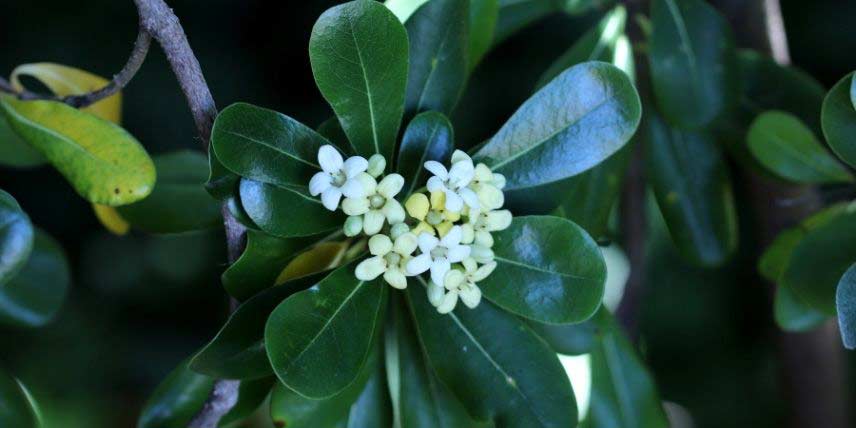
Pittosporum tobira flowering
Read also
Be attentive to evergreen bushesElaeagnus x ebbingei : a perfect screen against strong winds and sea spray
Elaeagnus ebbingei, also called chalef, is a bush with dense, compact foliage, making it ideal for forming a hedge. It provides effective protection against wind and sea spray. It has single, elliptical leaves, dark green to silvery-grey in the type species, and can reach up to 3 metres at ripeness. Moreover, it grows quickly and tolerates pruning well. Its flowering is rather discreet. Flowering occurs in autumn as small cream‑white bells, melliferous and pleasantly scented. This plant is very hardy, tolerating cold, drought, sea spray, salt and poor soils… It is very versatile and adapts to all types of soil.
There are many varieties, some with variegated foliage, very bright! This is the case, for example, of Elaeagnus ebbingei ‘Limelight’.
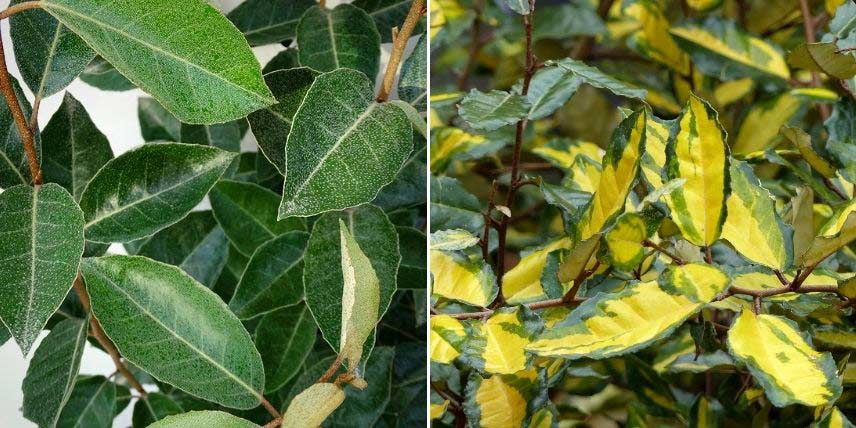
Foliage of Elaeagnus x ebbingei and of variety ‘Limelight’
Escallonia: essential in coastal gardens
Escallonia is a bush offering abundant pink flowering throughout summer, from June to September, although there are also varieties with white flowers. Its glossy, leathery and scented foliage is also appreciated. Leaves are small, ovate and dentate. They are most often dark green, sometimes golden as in variety ‘Gold Ellen’.
Don’t hesitate to plant Escallonia as a hedge, alongside other evergreen or deciduous bushes. It is a vigorous bush that grows quickly. Ideal for forming hedges by the sea. Easy to grow, it is disease-resistant and undemanding. Once established, it tolerates summer drought. It likes full sun and ordinary, well-drained soils, and tolerates partial shade but its flowering is often more abundant in full sun. The largest varieties reach up to three metres in height, but there are also dwarf varieties with a tapetum habit, such as Escallonia ‘Red Carpet’.
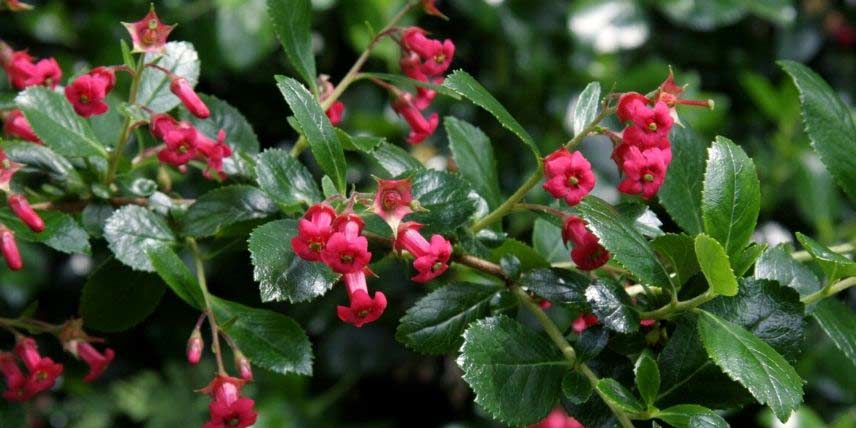
Escallonia rubra ‘Crimson Spire’ (photo Ben Rushbrooke)
Cistus: the prince of the garrigue
Cistus is a typically Mediterranean bush, which grows naturally in the garrigues of southern France, and is valued for its profusion of flowers with acrumpled appearance. They are composed of five petals, and at the centre a cluster of yellow stamens enhances the flower’s colour. In some varieties, the petals bear dark macules near the flower’s centre, creating a lovely contrast. Flowers can be white or declinate into beautiful shades of pink. Although ephemeral, those that fade are quickly replaced by other flower buds that open every day! Cistus leaves are single and elongated. Depending on variety, leaf colour ranges from green to silvery grey, through yellow, and there are even variegated varieties. It is a drought-resistant bush that tolerates poor, arid and stony soils without problem! Furthermore, it is not very susceptible to disease. To thrive fully, give it a sunny spot and well-draining soil!
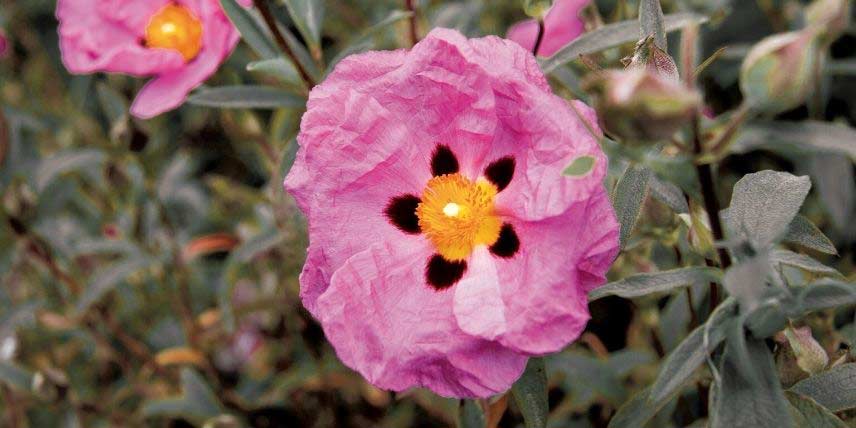
Cistus purpureus
Olearia: one of the best screens against sea spray
Olearia is a bush native to Australia and New Zealand, offering dense, grey-green foliage. Its generous flowering is also appreciated: it produces a profusion of flower heads, generally white, sometimes pale pink. Thus Olearia x scilloniensis is notable for the white flowers it produces in spring, which resemble asters… No wonder, as Olearia belongs to same family, Asteraceae! In addition, its flowering is melliferous and attracts pollinating insects. Its bushy, dense habit makes it an excellent windbreak. Leaf shape varies by variety: linear in Olearia virgata, ovate in Olearia traversii, while leaves are tiny and resemble those of heather in Olearia solandri. Depending on variety, it can reach between 1.5 and 4 metres at maturity. To thrive fully, Olearia needs to be planted in full sun, in free-draining soil that does not retain moisture. They are perfect in coastal garden hedges as they provide effective screens and tolerate sea spray very well. We also recommend pruning after flowering to help maintain a dense habit.
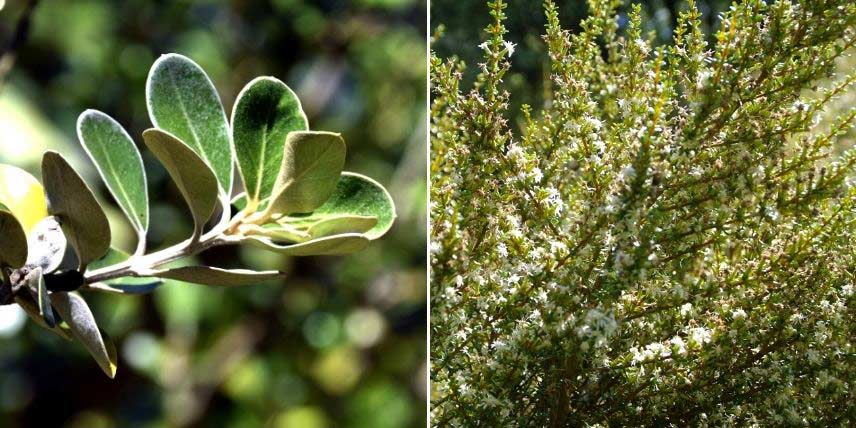
Olearia traversii (photo Krzysztof Golik) and Olearia solandri ‘Aurea’
→ Discover our full guide to Olearia: planting and cultivation
Callistemon : original flowering in bottlebrush form
Callistemon is an Australian bush that produces very distinctive summer flowering with an exotic appeal. Inflorescences, composed of numerous thread-like stamens, take the shape of a bottle brush, hence its nickname ‘Bottlebrush’! Its flowers display warm hues: often pink or red, sometimes even yellow. Leaves are leathery, long and narrow. It thrives in full sun and in perfectly drained soil. It also tolerates wind and sea spray, making it an ideal bush for the seaside. It copes well with poor, dry soils. Its branches sometimes take a graceful arched or trailing form: this is the case, for example, with Callistemon viminalis, which has a weeping habit.
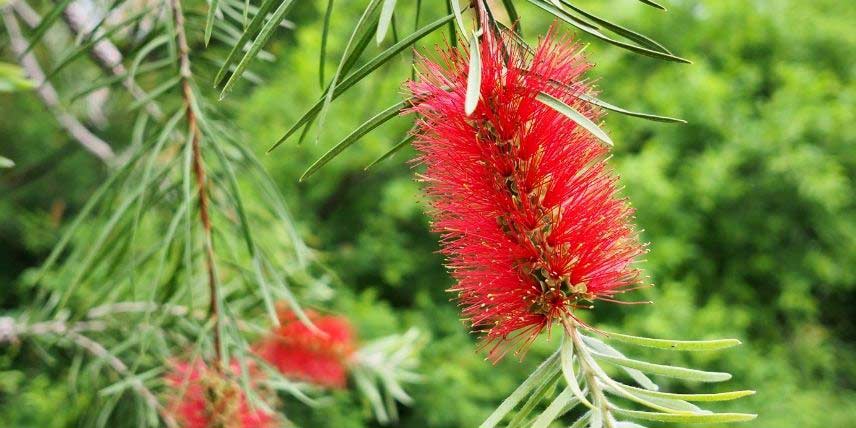
Callistemon rigidus
Grevillea: very exotic flowering and distinctive foliage
Native to Australia like Callistemon, Grevillea also offers a striking exotic look, with distinctive, warm flowering! Flowers can be pink, red, orange, and more rarely yellow or white. Inflorescences consist of petal-less flowers with prominent, colourful pistils! They can take different shapes: spider-like, cylindrical, toothbrush-shaped (Grevillea robusta)… Its foliage is very fine, often needle-shaped, sometimes beautifully divided like fern fronds. The habit of Grevillea is quite variable: there are dwarf, spreading species, while others can reach in cultivation up to 2 metres high. Grevillea thrive in full sun, in poor, free-draining, rather dry soil, and on non-calcareous ground. The most cultivated is probably Grevillea rosmarinifolia, which offers foliage as fine as rosemary, and pink-red flowering, but Grevillea juniperina is also commonly grown. To thrive, Grevillea needs a sunny position and rather poor, dry, non-calcareous soil. It is perfect for Atlantic or Mediterranean coastal gardens.
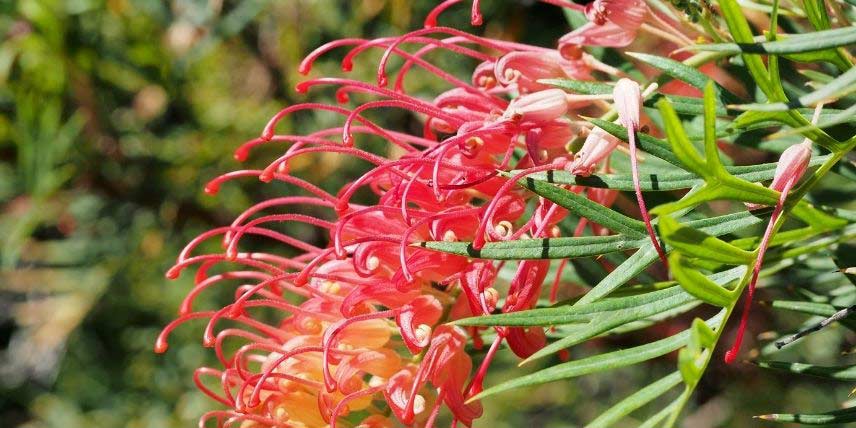
Grevillea ‘Joe Mason’
Rhamnus alaternus : a versatile bush
Rhamnus alaternus, also called Italian buckthorn, is an easy-to-grow bush that occurs naturally in Mediterranean garrigues. It forms a dense-habit bush and has leathery, dark green, glossy foliage. Leaves are small, ovate and sometimes dentate along margin of lamina. Spring flowering is rather inconspicuous but melliferous. On female plants, it is followed by pretty red, rounded berries enjoyed by birds. At ripeness, it can reach 4 to 5 metres in height. It tolerates sea spray, summer drought, air pollution, poor, stony soils, calcareous soils… It’s a true all-terrain bush! It grows easily, fairly quickly, and really requires little maintenance. Pruning is not even necessary. Moreover, it has great longevity! You can plant it in a border or in an informal hedge.
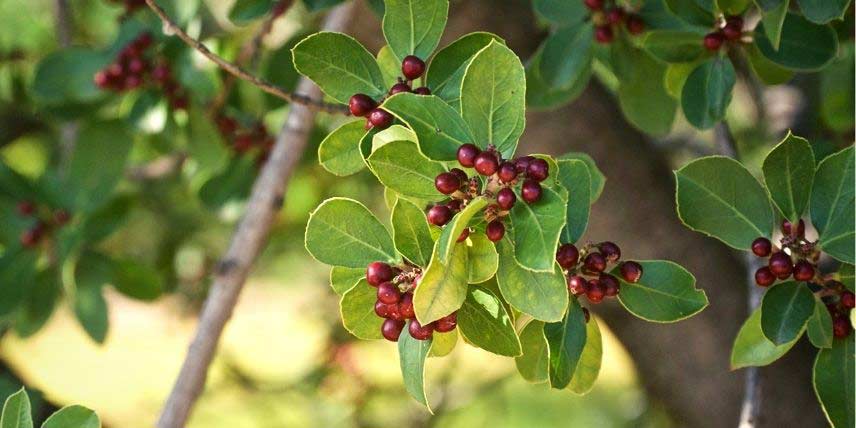
Rhamnus alaternus (photo Colsu)
Further reading
Discover our other tips :
- Evergreen trees and bushes: what are they?
- Using evergreen bushes in the garden
- 8 fast-growing evergreen bushes
- 7 evergreen bushes with colourful foliage
- Our plant sheet: Hoheria
- Subscribe!
- Contents



































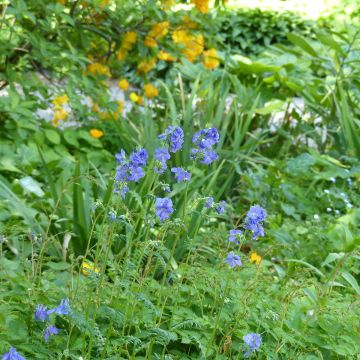
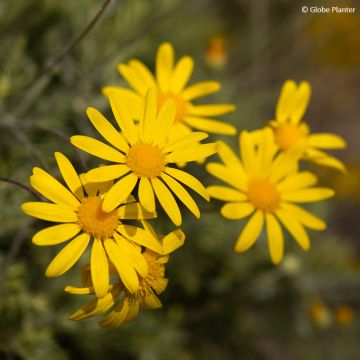
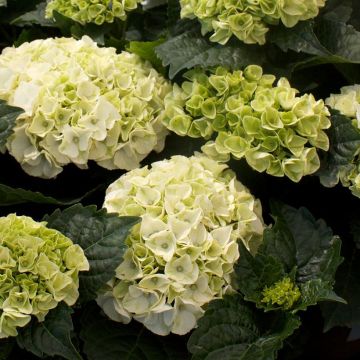
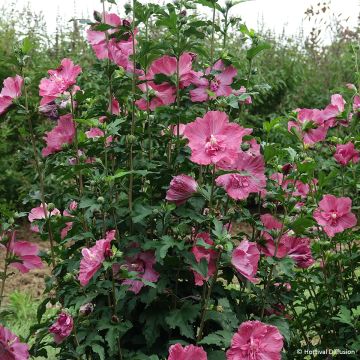



Comments